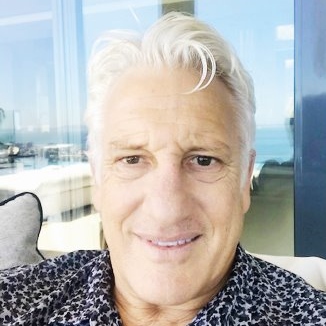
News

‘In Silicon Valley, work comes to a standstill when India are playing’
LUKE ALFRED
It seemed, well, just a little wider than regulations allowed.
Although he and his family have lived in Palo Alto, California, for many years (Seeff is an angel investor, providing seed capital for small start-ups and entrepreneurs), the cricket bug has not let go. He still follows the game, discusses it, and occasionally allows himself to ramble down memory lane, reflecting on a career that fell slap bang in the isolation years of the early 1980s.
“In Silicon Valley, where many Indian entrepreneurs and software engineers live, work comes to a standstill when India are playing in a Test,” says Seeff, “and it’s not unusual to see a ‘pick-up’ match in a park in Palo Alto or Sunnyvale.
“Funnily enough, the CEO of Google, Sundar Pichai, is a big cricket fanatic, and the two of us have spent time discussing and watching cricket together.”
Looking back on his career, Seeff’s greatest achievements seem intimately twinned with his sharpest disappointments. In 1983, he played for South Africa in the unofficial Tests and ODIs against an Arosa Sri Lanka XI, scoring 188 and 145 in the Test and ODI, respectively.
He acknowledges that the visiting rebel squad probably weren’t of the standard they should have been, but still takes pride in his run-scoring that summer. He also takes great personal satisfaction, he says, from the fact that he captained Western Province, although the shadow cast over it all was the fact that he never played official international cricket. “My career fell right in the middle of the apartheid ban period,” he says with a shrug.
Seeff is married to Maya Adam, the director of health education outreach at Stanford University’s Centre for Health Education. She pioneered an outreach programme at a clinic in Khayelitsha called Philani, which gave the family the opportunity to spend a year back in Cape Town. It was a chance Seeff grabbed. “We enrolled our three kids at Herzlia Highlands, my alma mater, and they had a blast – so much so that we might do it again next year,” he says.
Seeff follows the national side keenly, although he is careful to point out that it’s not as if he keeps tabs on every Proteas run chase. He says he’s a huge fan of Faf du Plessis and Aiden Markram, and was impressed with the pace barrage the South Africans handed out to the Pakistanis earlier this summer. He felt less so, however, about the “loss of concentration” in the twin Tests against Sri Lanka. “It looks like we have depth in the fast bowling department,” he says, “but urgently need to rebuild our top six batting line up.”
How, then, does he think we’ll do in the World Cup? “That’s always a hard one to predict as we have the talent, but haven’t been able to get across the line. We’re definitely not favourites. So maybe that reduces the pressure and allows the team to play with more freedom.”
Punditry aside, it’s the worst-kept secret in sport that Cricket South Africa (CSA) are financially overextended, with sponsorship revenues down and the mother body butting heads with their former allies, SuperSport.
With this in mind, how would Seeff guide South African cricket back to health? “That’s a tough question, but I understand that CSA haven’t been profitable for some years. I would address that situation – a loss-making entity can’t provide support to the game. So, I would analyse what does and doesn’t make financial sense, and adjust playing schedules and expenditures accordingly.
“You need a system that produces the best cricketers in the world, as the national team’s success is crucial to attracting talent and money. So, a lot of what needs to be done will have that goal in mind – making the national team the number one team in the world in all forms. If you achieve this objective, and are able to sustain the number one position, it would mean, de facto, that you have implemented a system that is successful.”
On a slightly less sober note, Seeff not only remembers some of the achievements, but also the challenges, answering as follows to a question about the best over he ever faced. “It was Transvaal versus Western Province at the Wanderers, and I was facing Vince van der Bijl,” he says. “I remember not being able to get bat to ball during a number of overs before, again, I played and missed only to realise that the ball had clipped the top of my off stump!”
Those were the days.




